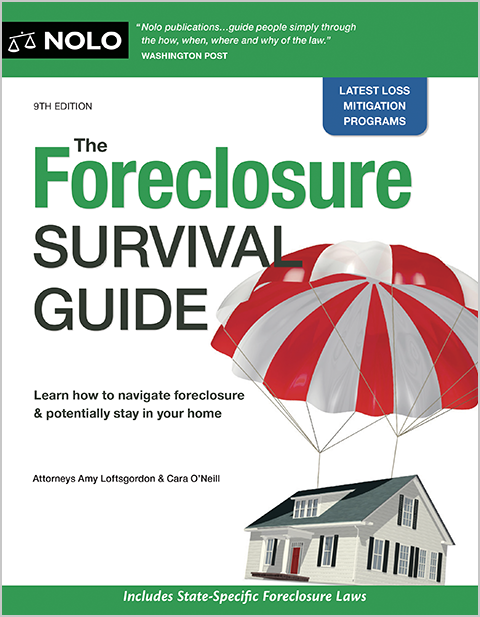Can my lender foreclose while reviewing my loan modification application? Learn how federal and state laws protect homeowners from dual tracking in foreclosure.
If you're facing foreclosure but are also applying for a loan modification, you might be at risk of "dual tracking." Dual tracking is an illegal practice where a mortgage servicer moves forward with foreclosure while simultaneously reviewing your loss mitigation application.
Dual tracking was common during the foreclosure crisis, leaving many homeowners blindsided when they lost their homes. Today, federal law and many state laws ban this practice, offering vital protections for borrowers.
This article explains what dual tracking is, when it's prohibited, and what to do if you think your servicer is violating the law.
- What Is Dual Tracking in the Mortgage Foreclosure Process?
- How Dual Tracking Led to Unfair Home Foreclosures
- Understanding the Risks of Dual Tracking in Foreclosure
- Laws That Prohibit Dual Tracking in Foreclosures
- Federal Laws That Ban Dual Tracking in Foreclosures
- State Laws That Prohibit Dual Tracking in Foreclosures
- What to Do If You Suspect Dual Tracking
- Frequently Asked Questions About Dual Tracking and Foreclosure
What Is Dual Tracking in the Mortgage Foreclosure Process?
Again, "dual tracking" occurs when a mortgage servicer continues the foreclosure process while simultaneously considering the borrower's application for a loan modification or another foreclosure avoidance option.
Now, however, federal law strictly limits the ability of servicers to foreclose on a borrower while also working out a loan modification or another alternative. Some states have enacted similar restrictions.
Overview of Loss Mitigation Options Available to Homeowners
"Loss mitigation" is the process in which loan servicers (on behalf of loan owners) help borrowers avoid foreclosure. Common loss mitigation options include:
- loan modifications, which permanently change the terms of your loan to make payments more affordable
- forbearance agreements, which temporarily reduce or pause payments
- repayment plans, where you temporarily make larger payments to get caught up on mortgage arrears
- short sales, where the home is sold for less than the remaining mortgage balance, and
- deeds in lieu of foreclosure, where the borrower voluntarily transfers the property to the lender.
Understanding these options is essential if you're behind on your mortgage. Submitting a complete and timely application for loss mitigation can trigger legal protections that delay or stop foreclosure under federal law.
How Dual Tracking Led to Unfair Home Foreclosures
In the past, it was typical for servicers to proceed with foreclosures while telling the homeowners they were in the running for modifications or other loss mitigation options. Usually, the homeowner would end up with whichever was completed first, typically a foreclosure.
Because of this practice of dual tracking, many homeowners who were sure that a loan modification was forthcoming were shocked to lose their homes.
Understanding the Risks of Dual Tracking in Foreclosure
Dual tracking poses a serious risk to homeowners because it can lead to a foreclosure even while they're actively seeking a way to save their home through a loan modification or other foreclosure alternatives. Many borrowers assume that submitting a loan modification application automatically pauses or stops the foreclosure process. In many cases, the law requires the servicer to pause the foreclosure, but it doesn't always happen in practice.
If a servicer is dual tracking, a foreclosure sale could still proceed, resulting in the borrower losing their home despite trying to resolve the default, severely damaging their credit, and leaving them with few legal remedies after the fact.
Laws That Prohibit Dual Tracking in Foreclosures
Again, federal law restricts servicers from taking certain steps during the foreclosure process if the homeowner is working on securing a loan modification or another alternative to foreclosure. Some states have this type of law as well.
Federal Laws That Ban Dual Tracking in Foreclosures
The Consumer Financial Protection Bureau, which the Dodd-Frank Wall Street Reform and Consumer Protection Act of 2010 established, issued mortgage servicing rules that went into effect on January 10, 2014, after being codified into federal law. Among other things, the rules prohibit dual tracking.
When Can a Mortgage Servicer Start the Foreclosure Process?
In most cases, a servicer can't initiate a foreclosure until the borrower is more than 120 days delinquent on the mortgage obligation. This period provides the borrower ample opportunity to submit a loss mitigation application.
If a borrower submits a complete loss mitigation application and the application is pending, the servicer can't start a foreclosure. So, if you submit all of the required paperwork, the foreclosure can't start until:
- the servicer informs you that you're not eligible for any loss mitigation option, and any appeal you make has been exhausted
- you reject the loss mitigation option that the servicer offers to you, or
- you accept a loss mitigation option but fail to comply with the terms of the deal, like not making payments during a trial modification. (12 C.F.R. § 1024.41 (2025)).
When Can Foreclosure Proceed After a Loan Modification Application?
If you submit a complete loss mitigation application to your servicer after the foreclosure has started but more than 37 days before a foreclosure sale, the servicer can't move for foreclosure judgment or order of sale, or conduct a foreclosure sale, until one of the three events described above happens. (12 C.F.R. § 1024.41 (2025).)
However, a servicer generally doesn't have to review multiple loss mitigation applications from you unless you bring the loan current after submitting one. (12 C.F.R. § 1024.41(i) (2025).)
State Laws That Prohibit Dual Tracking in Foreclosures
Some states, like California, Nevada, and Minnesota, have a Homeowner Bill of Rights prohibiting the dual tracking of foreclosures. Under these state laws, servicers must either grant or deny a first-lien loss mitigation application before beginning or continuing the foreclosure process. Even if the lender denies the loan modification, it can't foreclose until any applicable appeals period has expired.
Often, state law gives the borrower more time than federal law to submit an application and receive protection against dual tracking. For example, under Minnesota law, if the servicer receives a borrower's loss mitigation application before midnight on the 7th business day before the foreclosure sale date, the servicer must halt the foreclosure sale and evaluate the application. (Minn. Stat. § 582.043 (2025).)
Real-Life Example: How California's Law Helped Stop a Foreclosure
A few months after California passed its Homeowner Bill of Rights, a homeowner who had submitted a complete loan modification application successfully used the law to get a preliminary injunction to stop the foreclosure sale. In the case of Singh v. Bank of America, 2013 WL 1858436 (E.D. Cal. May 1, 2013), the servicer never informed the homeowner of its decision regarding the homeowner's loan modification application before proceeding with the foreclosure. Eventually, the parties settled, and the case was closed.
Colorado's Law to Halt Foreclosures During Loss Mitigation
In Colorado, a law that went into effect January 1, 2015 (Colo. Rev. Stat. § 38-38-103.2 (2025)), gives the public trustee (the party that administers Colorado foreclosures) the power to stop a foreclosure sale from occurring when a homeowner is in the process of applying for an alternative to foreclosure or the homeowner has accepted and is in compliance with a loss mitigation option, such as a loan modification.
State laws vary widely, so it's important to check whether your state has enacted dual-tracking restrictions. Contact your state's housing agency or an attorney familiar with local foreclosure law for up-to-date information.
What to Do If You Suspect Dual Tracking
If you think your mortgage servicer is violating dual tracking laws, it's important to act quickly. Start by gathering all communication records between you and your servicer, especially emails, letters, and call logs related to your loss mitigation application. Submit a written request asking the servicer for a status update and confirmation that foreclosure activity has paused.
If the foreclosure is still moving forward (or if a foreclosure sale is imminent and you don't have time to wait for a written response), contact a foreclosure attorney who understands both federal mortgage servicing rules and your state's specific foreclosure laws immediately. You can also file a complaint with the Consumer Financial Protection Bureau (CFPB) at consumerfinance.gov/complaint. You may also contact your state's attorney general or financial regulatory agency if your state has additional protections.
Frequently Asked Questions About Dual Tracking and Foreclosure
Here are some answers to other questions you might have about loan modifications, dual tracking, and foreclosure.
Can my lender foreclose while reviewing my loan modification?
Not if you submitted a complete application more than 37 days before the foreclosure sale. (This is a federal law. Some state laws provide more protection.)
What happens if I send in an incomplete loss mitigation application?
Your servicer must notify you of missing documents and give you time to submit them.
Can I reapply if I'm denied for a modification?
Servicers usually aren't required to review multiple applications unless you bring the loan current in between applications.
What if I miss a trial modification payment?
Missing payments during a trial period might void your agreement and allow foreclosure to proceed.
Who can help me apply for a loan modification?
To learn about different foreclosure avoidance options and get help preparing a loss mitigation application, consider making an appointment to talk to a HUD-approved housing counselor. In some situations, it's also helpful to have a foreclosure attorney assist you with the loan modification process.
- What Is Dual Tracking in the Mortgage Foreclosure Process?
- How Dual Tracking Led to Unfair Home Foreclosures
- Understanding the Risks of Dual Tracking in Foreclosure
- Laws That Prohibit Dual Tracking in Foreclosures
- Federal Laws That Ban Dual Tracking in Foreclosures
- State Laws That Prohibit Dual Tracking in Foreclosures
- What to Do If You Suspect Dual Tracking
- Frequently Asked Questions About Dual Tracking and Foreclosure

